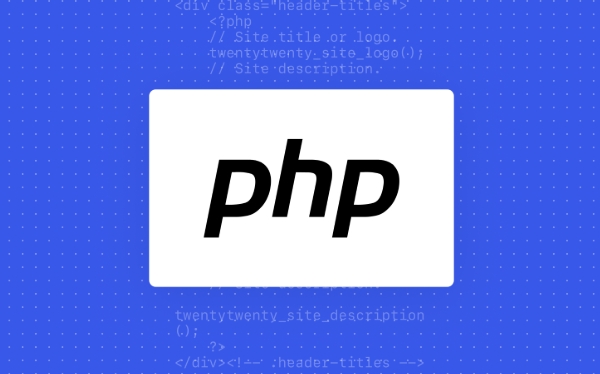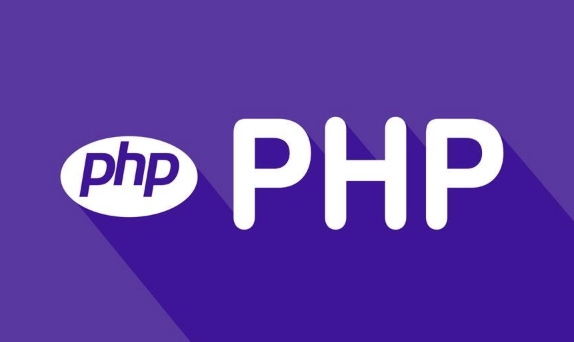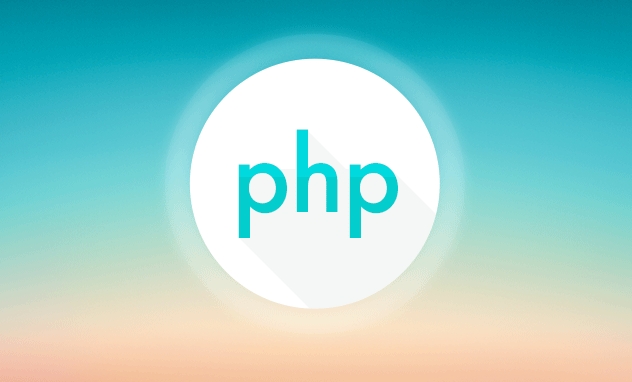建立用於利基應用程序的自定義PHP框架
定制PHP框架適用於特定場景,如高性能需求、遺留系統集成、資源受限環境或合規要求嚴格的領域;2. 構建時應聚焦核心組件:輕量路由、極簡依賴注入、無ORM的數據處理和定制化錯誤處理;3. 需規避安全疏忽、測試缺失、功能蔓延,並做好內部文檔;4. 案例中工業傳感器儀表板在低資源、離線、高並發環境下,通過去除ORM、會話、動態路由等開銷,實現50ms內響應;5. 自研框架不是替代Laravel,而是為特定需求打造更高效、可控、穩定的解決方案,當場景特殊時,這正是最佳選擇。

Building a custom PHP framework for niche applications isn't about reinventing the wheel—it's about crafting the right tool for a very specific job. Off-the-shelf frameworks like Laravel or Symfony are powerful, but they come with overhead and assumptions that don't always align with specialized use cases. When you're dealing with high-performance requirements, legacy integrations, ultra-lightweight services, or tightly controlled environments, a tailored PHP framework can offer precision, efficiency, and maintainability that general-purpose tools can't match.

Here's how and why you might build your own PHP framework for a niche scenario—and what to watch out for.
When a Custom Framework Makes Sense
Not every project needs a bespoke framework. But in certain situations, rolling your own is not only justified—it's strategic.

- Highly specialized domains : Think embedded systems, industrial IoT gateways, or government data processors with strict compliance rules.
- Performance-critical applications : If you're building a real-time analytics engine or a microservice handling 10K requests/sec, even small overhead from a full-stack framework adds up.
- Legacy system integration : When you're wrapping decades-old APIs or databases with non-standard behaviors, a lightweight, custom routing and data layer can be more flexible.
- Minimalist deployment environments : On low-resource servers (like Raspberry Pi clusters), you can't afford autoloaders, service containers, or ORMs.
In these cases, a custom framework lets you include only what you need—and enforce architectural consistency across the team.
Core Components to Build (And Keep Lean)
You don't need to replicate Laravel. Focus on the minimal viable structure that supports your niche.

1. Routing with Purpose
Instead of complex route collections, build a lightweight dispatcher:
$routes = [
'GET:/api/status' => 'StatusController@check',
'POST:/data/ingest' => 'IngestController@submit'
];
$path = $_SERVER['REQUEST_URI'];
$method = $_SERVER['REQUEST_METHOD'];
$key = "$method:$path";
if (isset($routes[$key])) {
[$controller, $action] = explode('@', $routes[$key]);
echo (new $controller)->$action();
}This avoids heavy regex parsing and is fast enough for constrained environments.
2. Dependency Injection (Minimalist Style)
Skip full service containers. Use a simple resolver for core services:
class Container {
private $services = [];
public function bind($name, $resolver) {
$this->services[$name] = $resolver;
}
public function get($name) {
return $this->services[$name]($this);
}
}Then inject only what's needed—like a logging service or database connection.
3. Data Handling Without ORM Bloat
For niche apps, direct PDO with prepared statements often beats Eloquent:
class DataGateway {
private $pdo;
public function __construct(PDO $pdo) {
$this->pdo = $pdo;
}
public function findByID($id) {
$stmt = $this->pdo->prepare("SELECT * FROM sensors WHERE id = ?");
$stmt->execute([$id]);
return $stmt->fetch();
}
}This gives you control, visibility, and speed.
4. Error Handling Tailored to Context
Instead of generic exceptions, define domain-specific errors:
set_exception_handler(function($e) {
if (ENV === 'production') {
error_log("Critical: " . $e->getMessage());
http_response_code(500);
echo json_encode(['error' => 'System unavailable']);
} else {
throw $e; // Re-throw in dev
}
});Avoid the Pitfalls
Building your own framework is empowering—but dangerous if done carelessly.
- Don't ignore security : Even if lightweight, include CSRF protection, input sanitization, and secure headers. Use PHP's built-in functions (
filter_var,htmlspecialchars) religiously. - Don't skip testing : Write unit tests for routing, controllers, and data access. PHPUnit is lightweight enough to include even in minimal frameworks.
- Avoid framework sprawl : It's easy to keep adding features. Stick to the scope. If you find yourself writing middleware pipelines or event dispatchers, ask: Does this niche app actually need it?
- Document the conventions : Since you won't have Laravel's docs, write clear READMEs on how controllers are structured, how config works, and how to add routes.
Use Case: Industrial Sensor Dashboard
Imagine a PHP app running on a factory floor server, pulling data from 500 sensors every second. Requirements:
- Must respond in
- Runs on a 1GB RAM ARM device
- Talks to a custom binary protocol via sockets
- No internet access (air-gapped)
A Laravel app would struggle here. But a custom framework with:
- No ORM
- No session handling
- Direct socket I/O
- Preloaded config in constants
- Static route map
…can run efficiently and reliably. You trade developer convenience for operational stability—and in this case, that's the right trade.
Building a custom PHP framework isn't for every team or every project. But when you're deep in a niche—where performance, footprint, or integration complexity matter more than rapid feature development—it's a powerful option.
You're not replacing Laravel. You're building something Laravel was never meant to be.
And sometimes, that's exactly what you need.
以上是建立用於利基應用程序的自定義PHP框架的詳細內容。更多資訊請關注PHP中文網其他相關文章!

熱AI工具

Undress AI Tool
免費脫衣圖片

Undresser.AI Undress
人工智慧驅動的應用程序,用於創建逼真的裸體照片

AI Clothes Remover
用於從照片中去除衣服的線上人工智慧工具。

Clothoff.io
AI脫衣器

Video Face Swap
使用我們完全免費的人工智慧換臉工具,輕鬆在任何影片中換臉!

熱門文章

熱工具

記事本++7.3.1
好用且免費的程式碼編輯器

SublimeText3漢化版
中文版,非常好用

禪工作室 13.0.1
強大的PHP整合開發環境

Dreamweaver CS6
視覺化網頁開發工具

SublimeText3 Mac版
神級程式碼編輯軟體(SublimeText3)
 PHP框架的優缺點比較:選哪個好?
Jun 04, 2024 pm 03:36 PM
PHP框架的優缺點比較:選哪個好?
Jun 04, 2024 pm 03:36 PM
PHP框架的選擇取決於專案需求和開發者技能:Laravel:功能豐富,社群活躍,但學習曲線陡峭,效能開銷高。 CodeIgniter:輕量級,易於擴展,但功能有限,文件較少。 Symfony:模組化,社群強大,但複雜,效能問題。 ZendFramework:企業級,穩定可靠,但笨重,許可昂貴。 Slim:微框架,速度快,但功能有限,學習曲線陡峭。
 在不同開發環境中 PHP 框架的效能差異
Jun 05, 2024 pm 08:57 PM
在不同開發環境中 PHP 框架的效能差異
Jun 05, 2024 pm 08:57 PM
不同开发环境中PHP框架的性能存在差异。开发环境(例如本地Apache服务器)由于本地服务器性能较低和调试工具等因素,导致框架性能较低。相反,生产环境(例如功能齐全的生产服务器)具有更强大的服务器和优化配置,使框架性能显著提高。
 PHP框架與微服務:雲端原生部署與容器化
Jun 04, 2024 pm 12:48 PM
PHP框架與微服務:雲端原生部署與容器化
Jun 04, 2024 pm 12:48 PM
PHP框架與微服務結合的好處:可擴展性:輕鬆擴展應用程序,添加新功能或處理更多負載。靈活性:微服務獨立部署和維護,更容易進行更改和更新。高可用性:一個微服務的故障不會影響其他部分,確保更高可用性。實戰案例:使用Laravel和Kubernetes部署微服務步驟:建立Laravel專案。定義微服務控制器。建立Dockerfile。建立Kubernetes清單。部署微服務。測試微服務。
 PHP框架與DevOps的整合:自動化與敏捷性的未來
Jun 05, 2024 pm 09:18 PM
PHP框架與DevOps的整合:自動化與敏捷性的未來
Jun 05, 2024 pm 09:18 PM
將PHP框架與DevOps整合可提高效率和敏捷性:自動化繁瑣任務,釋放人員精力專注於戰略任務縮短發布週期,加快上市時間提高代碼質量,減少錯誤增強跨職能團隊協作,打破開發和運營孤島
 PHP框架與人工智慧:開發人員指南
Jun 04, 2024 pm 12:47 PM
PHP框架與人工智慧:開發人員指南
Jun 04, 2024 pm 12:47 PM
使用PHP框架整合人工智慧(AI)以簡化AI在Web應用程式中的集成,建議框架:Laravel:輕量高效,功能強大。 CodeIgniter:簡單易用,適用於小型應用程式。 ZendFramework:企業級框架,功能完善。 AI整合方式:機器學習模型:執行特定任務。 AIAPI:提供預先建置功能。 AI庫:處理AI任務。
 哪種 PHP 框架提供最全面的擴充函式庫,方便快速開發?
Jun 04, 2024 am 10:45 AM
哪種 PHP 框架提供最全面的擴充函式庫,方便快速開發?
Jun 04, 2024 am 10:45 AM
PHP框架擴充庫選擇提供了四種框架:Laravel:以其龐大的生態系統和第三方套件而著稱,提供認證、路由、驗證等擴充。 Symfony:高度模組化,透過可重複使用的「Bundle」擴展了功能,涵蓋身份驗證、表單等領域。 CodeIgniter:輕量級且高效能,提供資料庫連接、表單驗證等實用擴充。 ZendFramework:企業級功能強大,擁有身分驗證、資料庫連線、RESTfulAPI支援等擴充功能。
 PHP框架在敏捷開發和大型專案的應用
Jun 04, 2024 pm 01:42 PM
PHP框架在敏捷開發和大型專案的應用
Jun 04, 2024 pm 01:42 PM
PHP框架在敏捷開發和大型專案中應用廣泛,提供敏捷性、可擴充性和安全性等優勢。例如,在電子商務網站中,Laravel框架可快速建立原型、處理複雜業務邏輯、確保安全性和擴充功能。透過利用預先定義的元件和設計模式,PHP框架為開發人員建立可擴展且維護良好的應用程式提供了便利。
 PHP框架與Python框架的比較
Jun 05, 2024 pm 09:09 PM
PHP框架與Python框架的比較
Jun 05, 2024 pm 09:09 PM
PHP和Python框架在語言特性、框架生態和特徵上有所不同。 PHP主要用於Web開發,易於學習;Python具有廣泛的庫生態系統。流行的PHP框架包括Laravel、CodeIgniter、Symfony;Python框架包括Django、Flask、Web2py。在實戰案例中,Laravel使用命令列產生部落格模型和視圖,而Django使用DjangoAdmin和Python腳本創建部落格。







